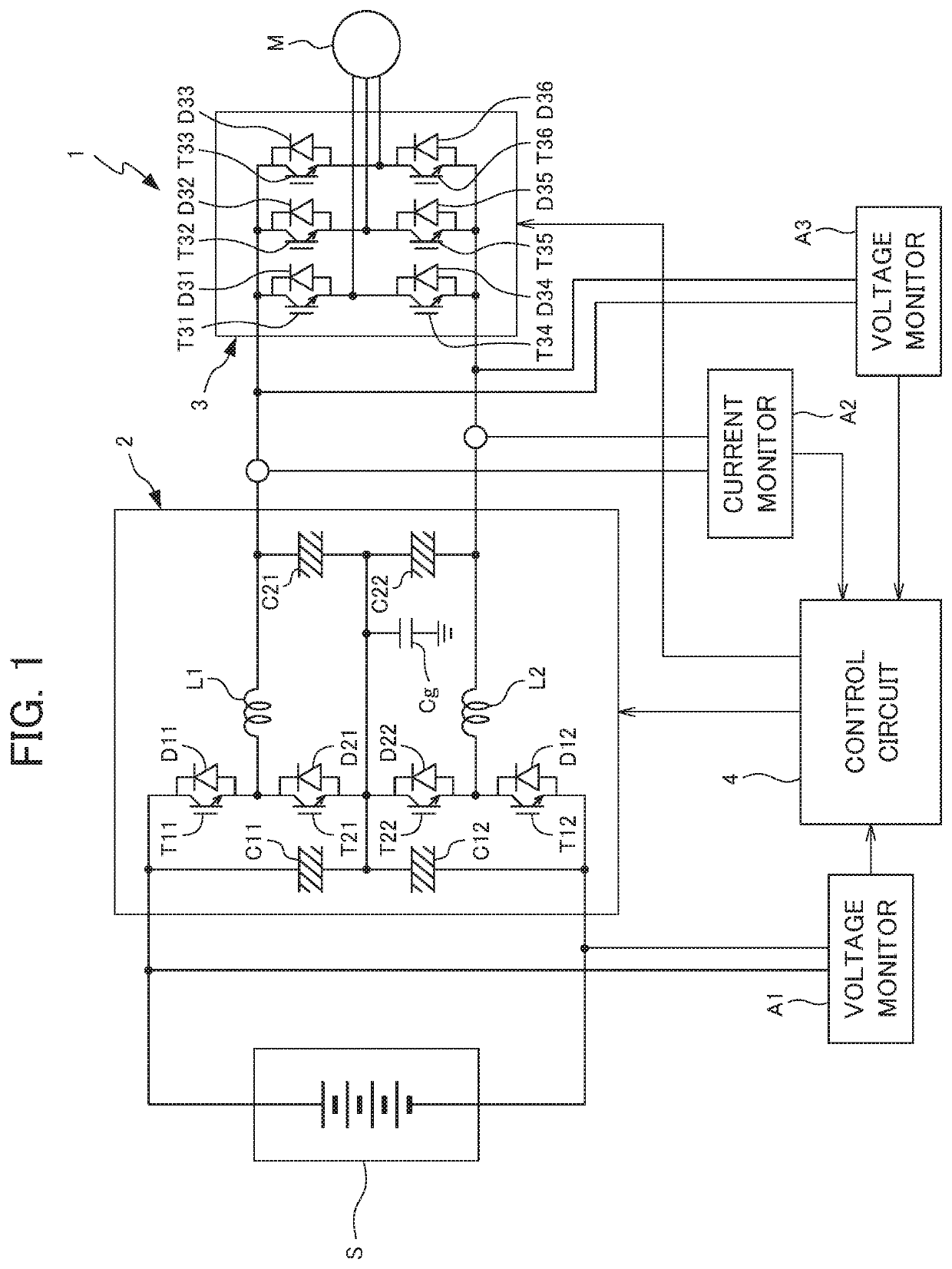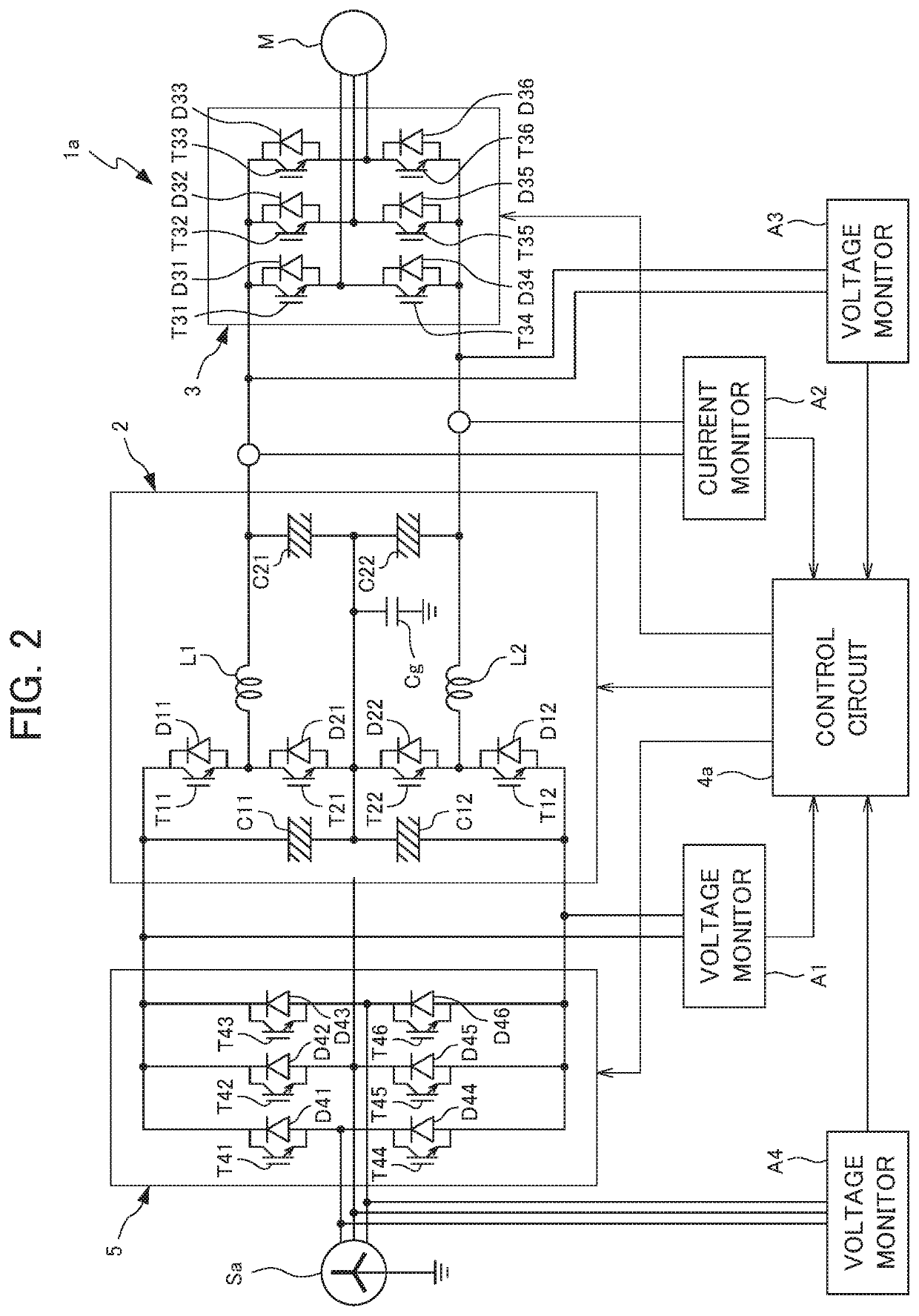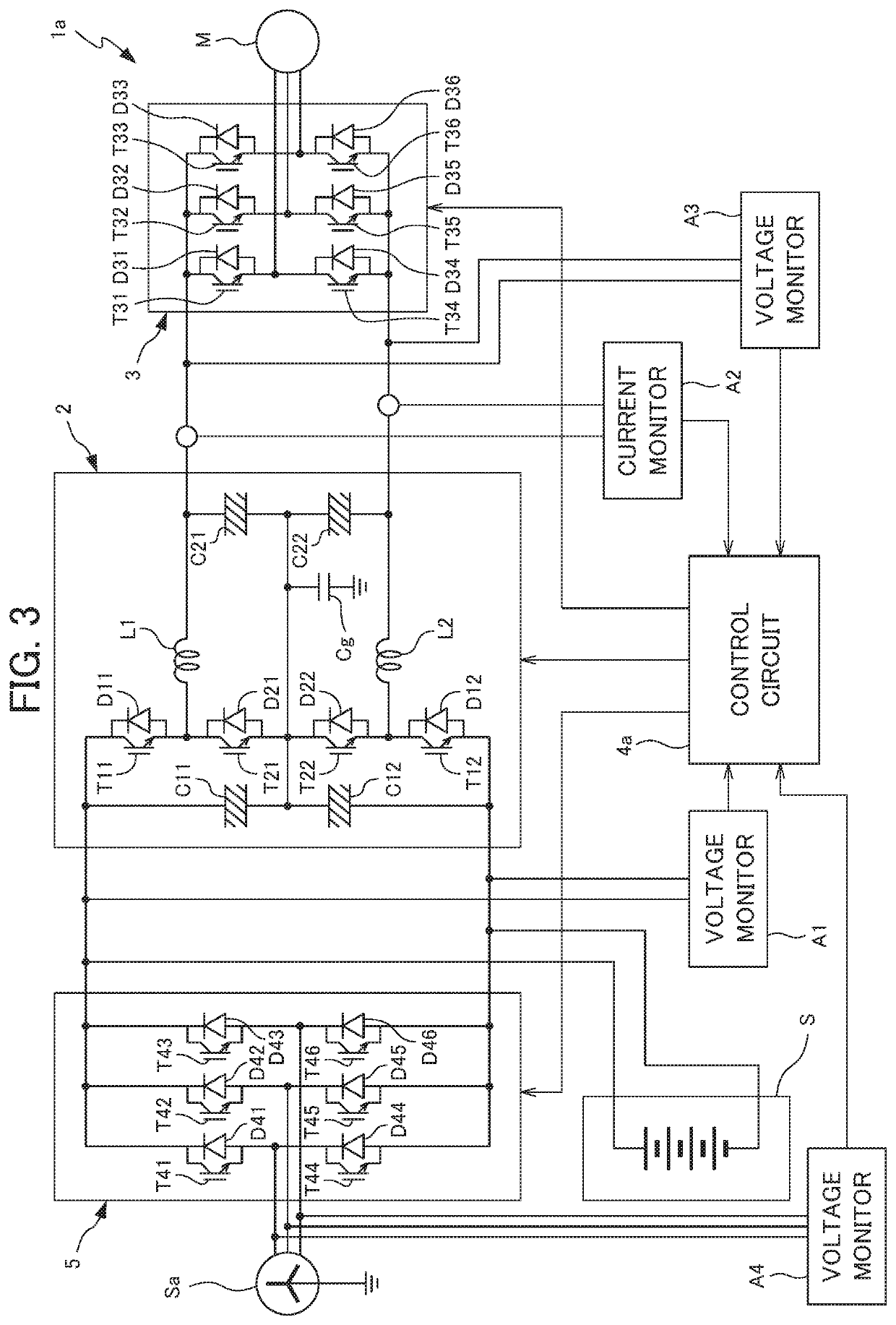Power supply and power system having a step-down circuit and an inverse-conversion circuit
a power supply and power system technology, applied in the direction of dc-dc conversion, control systems, dc-ac conversion without reversal, etc., can solve the problems of high dielectric voltage, large switching noise, and inability to us
- Summary
- Abstract
- Description
- Claims
- Application Information
AI Technical Summary
Problems solved by technology
Method used
Image
Examples
first embodiment
[0020]Each embodiment of the present disclosure will be explained below while referencing the drawings. FIG. 1 is a circuit diagram showing the configuration of a power supply 1 according to the present disclosure.
[0021]The power supply 1 is a device which supplies (powered running) a load (motor M in the present embodiment), by converting the direct current supplied from a primary power source (DC power source S) into three-phase alternating current of a predetermined voltage. In more detail, the power supply 1 is connected to a primary power source S having higher voltage than the rated voltage of the motor M, and supplies the motor M by converting the three-phase alternating current of the primary power source S into three-phase alternating current having voltage equal to the rated voltage of the motor M and frequency equal to the frequency set by external equipment or a user. In addition, the power supply 1 of the present embodiment is configured so as to be able to convert the ...
second embodiment
[0037]FIG. 2 is a circuit diagram showing the configuration of a power supply 1a according to the present disclosure. For the power supply 1a in FIG. 2, the same reference symbols will be assigned to constituent elements which are the same as the power supply 1 in FIG. 1, and redundant explanations will be omitted.
[0038]The power supply 1a of the present embodiment is a device which converts the three-phase alternating current supplied from the primary power source (AC power source) Sa into three-phase alternating current having different voltage and frequency, and supplies (powered running) to the load (motor M in the present embodiment). In more detail, the power supply 1a is connected to the primary power source Sa which is grounded to the neutral point having a voltage of at least the rated voltage of the motor M, converts the three-phase alternating current of the primary power source Sa into three-phase alternating current having a voltage equal to the rated voltage of the mot...
third embodiment
[0046]FIG. 4 is a circuit diagram showing the configuration of a power supply 1b according to the present disclosure. The power supply 1b of the present embodiment, similarly to the power supply 1a in FIG. 2, can convert the three-phase alternating current supplied from the primary power source (AC power source) Sa into three-phase alternating current of different voltage and frequency, and supply to the motor M, and can convert the three-phase alternating current supplied from the motor M in the inverse direction into three-phase alternating current of the equal voltage and phase as the primary power source Sa, and supply to the primary power source Sa.
[0047]The power supply 1b of the present embodiment includes: a forward-conversion circuit 5 which extracts positive voltage and negative voltage from the primary power source Sa; the step-down circuit 2b which steps down the voltage inputted from the forward-conversion circuit 5 and outputs; the inverse-conversion circuit 3 which ou...
PUM
 Login to View More
Login to View More Abstract
Description
Claims
Application Information
 Login to View More
Login to View More - R&D
- Intellectual Property
- Life Sciences
- Materials
- Tech Scout
- Unparalleled Data Quality
- Higher Quality Content
- 60% Fewer Hallucinations
Browse by: Latest US Patents, China's latest patents, Technical Efficacy Thesaurus, Application Domain, Technology Topic, Popular Technical Reports.
© 2025 PatSnap. All rights reserved.Legal|Privacy policy|Modern Slavery Act Transparency Statement|Sitemap|About US| Contact US: help@patsnap.com



